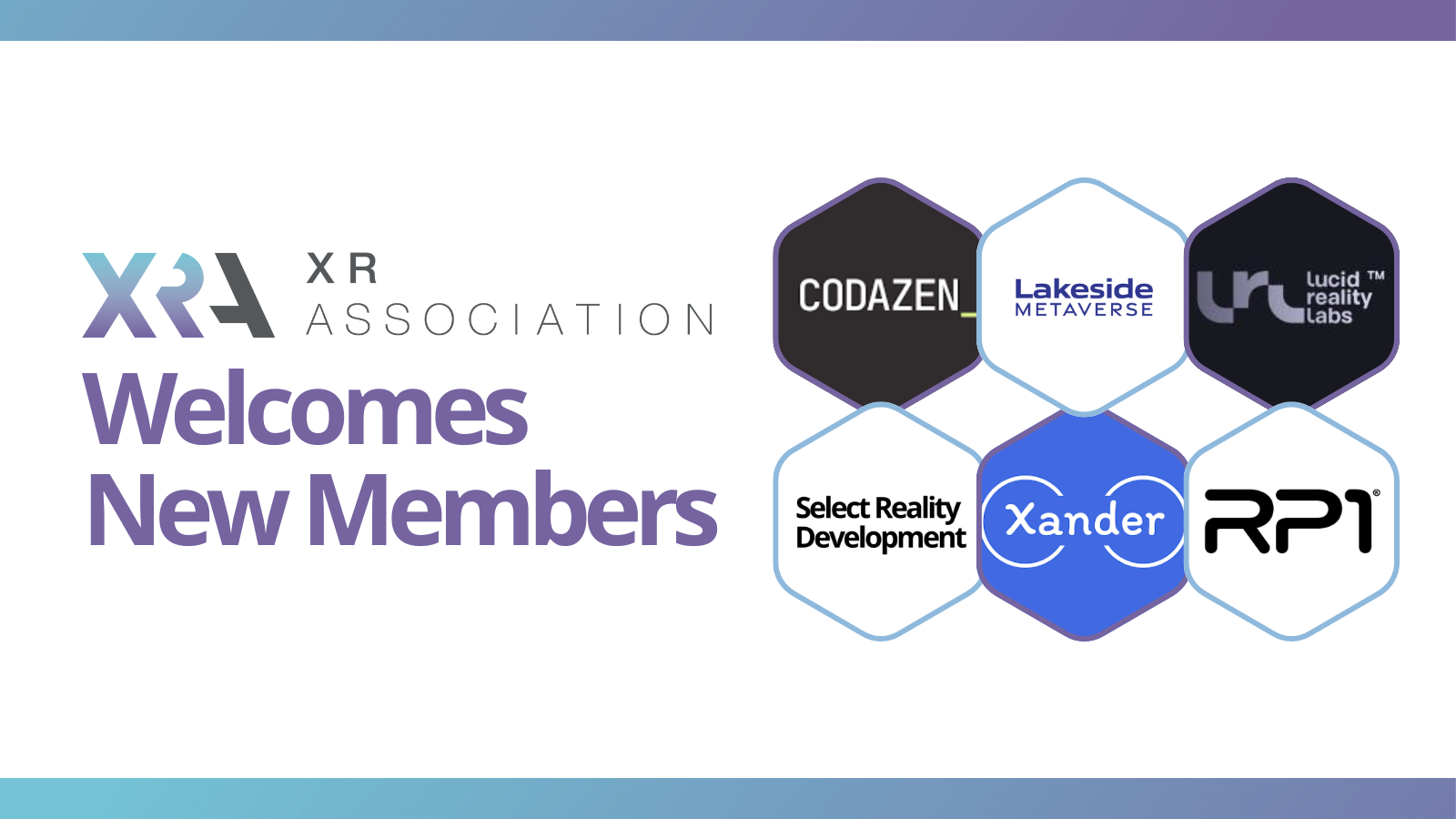XR ASSOCIATION RELEASES WHITE PAPER LAYING OUT 9 INITIATIVES TO ACCELERATE THE RESPONSIBLE DEVELOPMENT OF XR
The Paper Charts a Path For the Future of Immersive Technologies; Insights and Initiatives Shaped by XRA’s Convening of the Future of XR Advisory Council
Washington, D.C. – Today, the XR Association (XRA), the trade association representing the growing ecosystem of companies powering virtual, augmented, and mixed reality (XR), announced the release of an extensive white paper entitled, Charting the Future of Immersive Technology: Transforming Work, Education, Health, and Entertainment. This paper was shaped by the insights and discussions of the Future of XR Advisory Council (XRAC). XRA launched the XRAC, which included over sixty experts from industry, academia, public interest, and government, to delve into the critical issues, challenges, and potential solutions for the continued development and adoption of immersive technology.
“We’re grateful for the input from all who participated in XRA’s multi-stakeholder discussions throughout the year and contributed to this tremendous effort,” said Elizabeth Hyman, CEO of the XR Association. “The initiatives outlined in the paper mark a continuation of the day-to-day work of the XR Association. We are committed to responsibly advancing the XR industry and showcasing immersive technology’s phenomenal potential to change lives.”
The paper is the result of thirteen in-depth discussion sessions convened by the XRAC across 5 core issue areas:
● Norms and Behavior in Immersive Spaces
● Safety and Well-Being for Youth
● Privacy as an Element of Trust
● Respect and Diversity in the Workplace
● Interoperability
Each working group topic relates to the impactful work being done to drive immersive technologies, their opportunities and risks, and this technology’s trustworthy and responsible development. The insights shared in these interrelated discussions are highlighted in the whitepaper and serve as the basis for nine initiatives that XRA will undertake in the coming years.
Key Initiatives Outlined in the White Paper:
Initiative 1: XRA will convene a diverse community of parents, youth, and civil society to help identify and inform how the industry continues to develop additional parental controls and other tools that maximize online safety for young people in immersive environments.
Initiative 2: XRA will conduct a literature review that captures the most up-to-date research on the impacts of XR on young people. XRA recognizes that one challenge to realizing XR technology’s benefits to youth for education, health, entertainment, and other uses is the need for more research on its potential effects.
Initiative 3: Following initiatives one and two, XRA will author a chapter of its Developers Guide focused on the safety and well-being of young users. XRA’s Developer Guide is a comprehensive set of guidelines and best practices aimed at helping developers create immersive and engaging experiences. The guide covers hardware and software best practices, design principles and other aspects of XR development.
Initiative 4: To address the lack of clarity surrounding critical privacy terms associated with immersive technologies, XRA will develop a process, with input from regulators, industry, academia, civil society, and others, to create a common taxonomy of key terms impacting consumer privacy.
Initiative 5: XRA will establish a dedicated privacy track as part of the annual AR/VR Policy Conference that XRA hosts with the Information Technology and Innovation Foundation (ITIF). This conference track will focus on the latest research and best practices developing in the tech industry, and XR in particular, around privacy.
Initiative 6: XRA will create a Resource Hub to provide examples and best practices for adopting XR tools and programs to foster greater respect, inclusion, diversity and accessibility. This initiative is intended to establish a one-stop shop for employers, workers, community groups, and other stakeholders to access information on such tools and programs in XR.
Initiative 7: XRA, engaging with relevant stakeholders, will develop a resource exchange similar to a GitHub repository, where developers can share existing norms and behaviors tools and plug-ins and/or swap ideas about new tools that need to be developed or are being developed in the XR space. XRA will also explore updating its Developers Guide, particularly Chapter Two: Creating Safe, Inclusive, and Respectful Immersive Experiences, on the most recent tools and best practices for norms and behaviors embedded along the XR tech stack.
Initiative 8: XRA will develop a public guide with input from relevant stakeholders to educate users on the tools available to them in immersive environments that address harassment, bullying, or other bad behavior, including tools they can use to protect themselves in real time.
Initiative 9: XRA will create a working group to build a platform highlighting innovative strategies taken by companies to ensure a safe, inclusive, and respectful user experience in immersive environments. This initiative will build off the XRA Limitless Voices campaign, which seeks to elevate and celebrate diverse and thoughtful innovators in our industry.
As the XR industry continues to develop new technologies and pursue widespread adoption, Charting the Future aims to address some of the foundational challenges immersive technology faces on its road to becoming the next great computing platform.
Fill out this form to download the executive summary and full paper.
"*" indicates required fields
By submitting this information, you are consenting to XRA’s privacy policy.
About the XR Association:
XRA is a non-profit trade organization representing hardware manufacturers across the broad XR industry, with current members including Facebook, Google, HTC VIVE, Microsoft, and Sony Interactive Entertainment. The association promotes the responsible growth and development of XR technology, fosters dialogue among public and private stakeholders, develops industry best practices, and provides education, training, and marketing information related to the XR industry.


